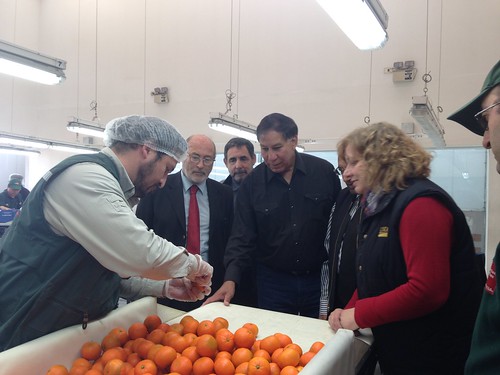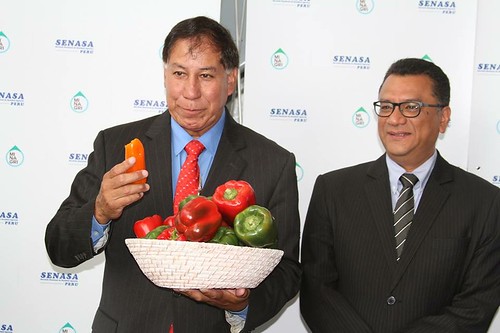
Recently, I had the pleasure of visiting with US Department of Agriculture counterparts in both Chile and Peru. My travel to South America was an opportunity to discuss our most recent trade successes and how we can further build on this great relationship and momentum.
In Chile, I met with the Chilean Minister of Agriculture, Carlos Furche and Chilean Agriculture and Livestock Service (SAG) officials to discuss bilateral animal and plant health trade issues. US Ambassador to Chile, Michael Hammer, was also in attendance. To better understand their domestic processes and procedures for imports, I participated in a tour of a grocery store selling U.S. products including U.S. beef and visited a feedlot and a dairy farm as well as other agricultural sites near Santiago. This year Chile granted market access to U.S. live cattle and renewed domestic access to U.S. bovine embryos, more easily allowing Chile’s farmers to improve the national beef and dairy herds with genetics supplied from the U.S. The last time I visited Chile was five years ago, so it was great to refresh the cooperative and collaborative working relationship between USDA’s Animal and Plant Health Inspection Service and SAG.
Another highlight from my trip to Chile was a tour of a Pre-Clearance Airport Inspection site at the Santiago Airport. After Mexico, APHIS’s largest preclearance presence overseas is in Chile. The program was launched over 30 years ago to ensure that fresh Chilean horticultural export shipments do not spread quarantine pests and diseases to the United States. A total of 155 different commodities are included in this program. During the 2014-2015 season, 97.4 million cases of products were exported, worth a total of US$ 1.3 billion. The success of this joint preclearance program between USDA – APHIS and Chile’s SAG has helped to build longevity and strength in our trade relationship.

During my visit to Peru, I met with the Peruvian Minister of Agriculture, Juan Manuel Benites, and Peruvian National Agricultural Health Service (SENASA) officials to discuss bilateral animal and plant health trade issues. US Ambassador to Peru, Brian Nichols, was also in attendance. In our discussion, we emphasized the importance of using sound science and our strong working relationship in facilitating bilateral trade. We were able to discuss our recent accomplishment in finalizing the U.S. cattle agreement allowing exports to Peru. Likewise, Peru was able to discuss the importation of Peru peppers and citrus into the U.S., whose final rules were published in September. While in Peru, I also visited a satellite operation of a U.S. based blueberry nursery that exports high quality genetic material for producing blueberry fruit in Peru.
Also in Peru, I had the opportunity to give opening remarks at the 8th World Avocado Congress held in Lima, where I provided an overview of the U.S. avocado industry, a history of the avocado imports from Mexico, Peru and Chile, and talked about the success of the Hass Avocado Research and Promotion Program.
My trip to South America was timely, important, and productive. It demonstrated the excellent working relationship the U.S. has with both Chile and Peru, and the importance of collaboration between APHIS, SAG, and SENASA. This was yet another testament to USDA’s commitment to facilitate bilateral trade while protecting American agriculture.
